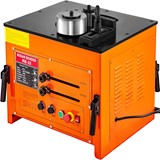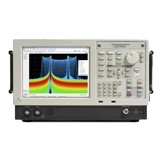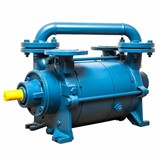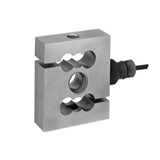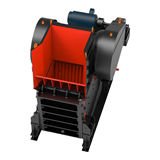Exports only total A$68 billion worth of goods and it employs a mere 856,000 people; all showing a significant drop since 1995, when the sector contributed 14% to GDP and employed more than a million people. (Statistics: abs.gov.au: Australian Bureau of Statistics 5206.0 Sep 2017; csiro.au: Australia 2030 - Navigating our uncertain future, and - Advanced Manufacturing Roadmap)
However, two of Australia’s thought leading institutions, the Commonwealth Scientific and Industrial Research Organisation (CSIRO) and the Australian Research Council, disagree.
They provide convincing evidence of a sector that, rather than over, is at a dynamic turning point. And the recently announced $3.8 billion government boost to defense exports could mark 2018 as a year to seriously rethink manufacturing.
A sector with major growth opportunities
Recent industry research by the Commonwealth Scientific and Industrial Research Organisation (CSIRO) clearly signposts the future, and how to get there ahead of – indeed in partnership with - your competitors.
Manufacturing in Australia is a perfect example of a sector in transition, with a successful future. Local manufactures are in the right place at the right time – if they do the right thing.
Australian manufacturers are harnessing scientific and technological innovations including automation, digitisation and new materials.
The CSIRO identified “major growth opportunities” following comprehensive stakeholder interviews, workshops with industry leaders and a survey with both private and government bodies.
They also identified four of Australia’s key advantages: high education levels, a global reputation for research excellence, a high-achieving SME sector, and a strategic location within the Asian region. All valuable collateral.
The challenge, and the nub of their findings, is to build a sector that is “highly-integrated, collaborative and export focused, providing high-value customised solutions that contribute to global supply chains.”
A number of Australian manufacturers are already leading the way.
Collaboration
One successful emergent partnership is between Nautitec and Northern Light Technologies. The two manufacturers have combined forces – one providing hardware the other software, in response to a mining company’s needs. The result: state-of-the-art WI-Fi coverage for mines that monitors safety, fleet optimisation, machine performance and mining robotics. The big win and marketability: improved productivity.
Integration
There is a solid place for Australian manufacturers in the global supply chain. The local market is too small to stand alone but multinationals source quality components globally.
ANCA Tools have established a firm foothold, manufacturing parts used in automated production systems that have become integral to Japanese manufacturers.
In a world-first Australian manufacturer Carbon Revolution is mass-producing carbon fibre wheels on standard equipment, currently for Ford’s Mustang Shelby GT350R.
Their eponymous wheels are indeed revolutionary, weighing up to 50% less than aluminium and reducing carbon emissions by up to 60% - an innovation they are now marketing to the aerospace and industrial sectors.
Synchronously, the government is planning to give manufacturing a $3.8 billion boost. Prime Minister Malcolm Turnbull’s recently announced plan aims to make Australia one of the world’s top 10 defense exporters, on par with countries like Britain, France and Germany within 10 years.
Political debate or the changeable nature of governing parties aside, this indicates commitment to sustaining the manufacturing industry.
The ambitious plan is also in line with the CSIRO’s study regarding Australia’s research capabilities and the global supply chain opportunities. The $3.8 billion budget enables extensive research and development, and is available to Australian defense companies looking to sell overseas.
High-value customised solutions
Bespoke manufacturing is another growing sector. Despite being more expensive it is rapidly replacing mass-produced products.
While mass-production relies on selling millions of cheaply made components, bespoke manufacturing combines new materials, automation, new chemical processes and biotechnology, enabling customised and superior products.
The Australian business landscape is tailor-made for this sector: small to medium enterprises (SMEs) make up 97% of Australian businesses. The manufacture of customised products – higher quality, lower quantity – is an ideal route to the global market.
Australian company Oventus is already out there with their product, 02Vent, a mouthpiece for sleep apnoea sufferers. A 3D scanner traces the patient’s mouth and 3d prints a customised mouthpiece to prevent potentially fatal sleep interruption. This is bespoke manufacture at its best: personalised fitting and comfort means this medical necessity attracts a luxury price. Oventus recently listed on the Australian stock exchange and is set to go global.
The creative industries
The arts may seem out of the place in the manufacturing sector but, according to the report, Made in Marrickville, produced for the Australian Research Council’s Discovery Project, they play a key role in re-imagining and transforming the manufacturing industry.
The research into the creative industries/manufacturing interface benchmarks the performance of Australian cities against equivalents in the United States, UK, China and Germany.
And, according to the report, Australia comes out tops. The manufacturing hub, centred around Marrickville’s contested Carrington Road, supplies and services local icons such as the Sydney Opera House, Sydney Theatre Co., the Sydney Gay and Lesbian Mardi Gras, Chinese New Year, and Vivid Festival.
Similarly to the CSIRO findings, the reach is global. “Among the precinct’s enterprises are many award-winning companies, with Oscars, BAFTAs and ARIA awards among them.” Their impressive list of clients includes Coca Cola, Woolworths, Chanel, Packer, the ABC and Apple.
The Australian Research Council’s Discovery Project goes beyond a sector dominated by SMEs, with almost 80 percent being micro-enterprises employing less than five people. The report outlines how the combined industries production includes:
- Design and construction of trade exhibits for international trade conventions;
- Prop construction and hire for international events;
- Audio-visual installation and operation for large events;
- Production of merchandise for major international events.
Small is the new big. The question is no longer whether the manufacturing sector is over. Rather, the questions are: where do you fit into this dynamic industry predominated by small, medium and micro enterprises? How and with whom can you collaborate? Where’s your place in the global supply chain?
Ask the experts…
Want to comment on this topic? Click 'Have Your Say' and add your thoughts.




